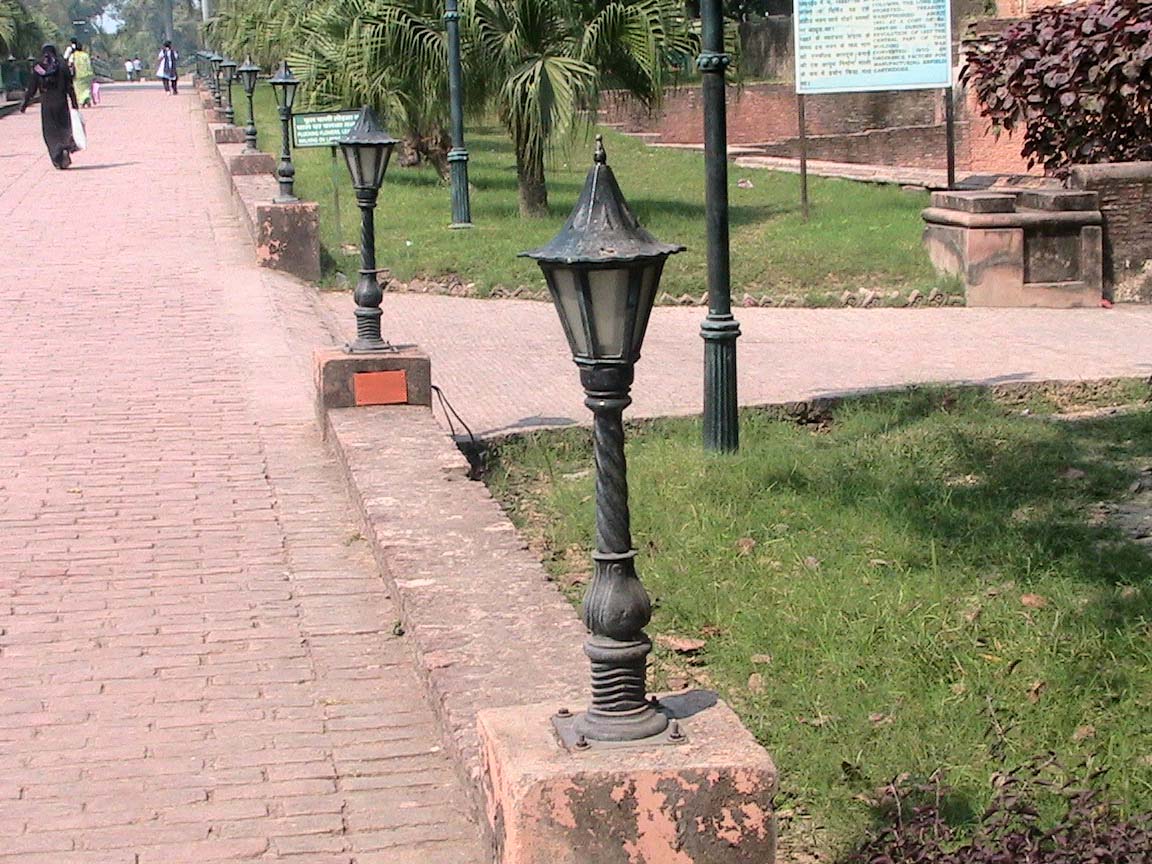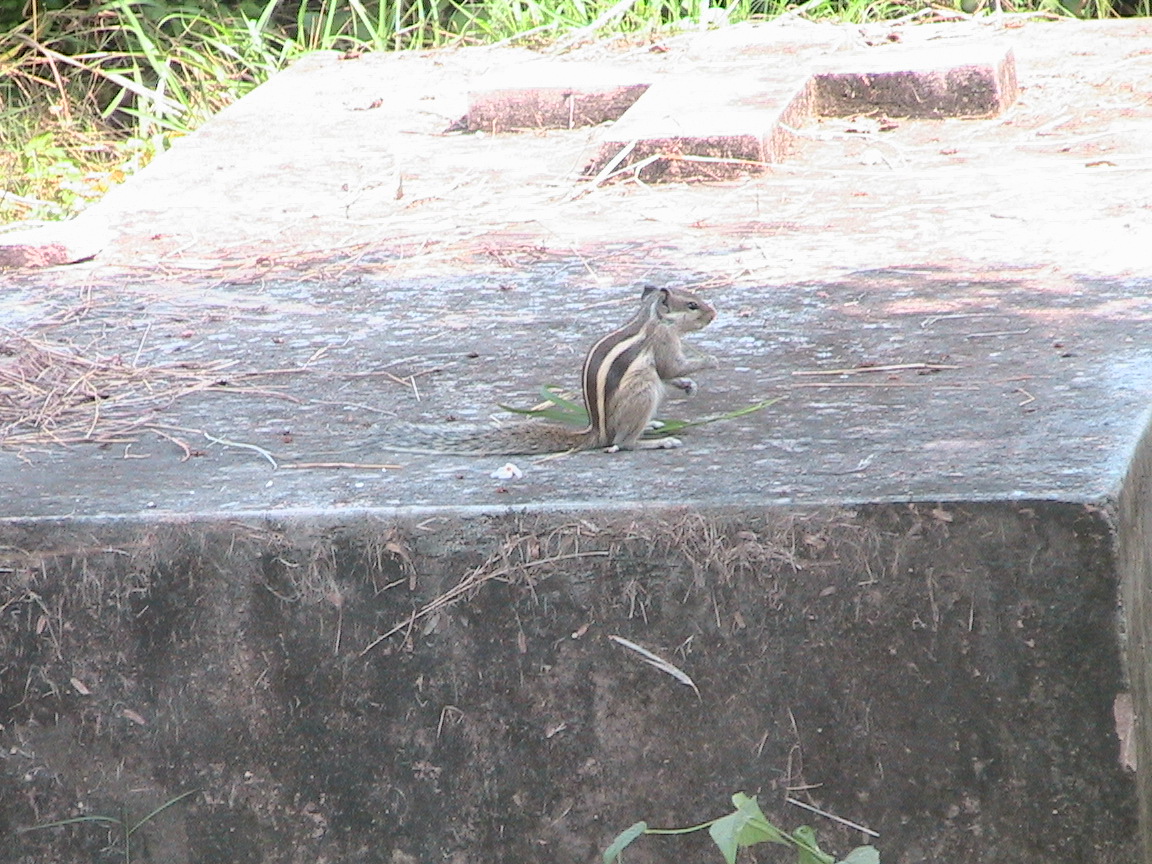The ruins of the Lucknow
Residency are an important part of Indian History and the dilapidated
structures stand testimony to the fact that the siege of the Lucknow Residency by
the fighters of the Indian “war of Independence in 1857”, thoroughly unnerved
the Europeans who were in complete disarray and sought military assistance and
resources from whatever military establishments they could to save themselves.
Estimates place the war dead on the European/East India Company side defending
the Residency at, at least 2100 (both Europeans and “Native Indians” who fought
for the “Defence of the Residency”).
Although history records that the
Indian War of Independence was not a success, it, nevertheless, spelt the
death-knell of the East India Company’s rule in India and the governance of the
Indian sub-continent was taken over by the British Crown with India being
called the “Jewel in the Crown”. Shortly, after the war, the East India Company
also lost the right to issue their own coins in 1860 and the era of the “Regal
Coinage” in India began.
A brief history of the Lucknow Residency:
·
In 1774, Nawab Shujauddaula (Ruler of Avadh from
1753-1775) agreed to a proposal by the East India Company to have a British
resident stationed in Avadh.
·
In 1775, the Lucknow Residency was established
for the British resident, when the capital of Avadh shifted from Faizabad to
Lucknow by Nawab Asafuddaula (Ruler of Avadh from 1775-1797) who succeeded
Shujauddaula. However this was in the nature of a small residence for the British resident which functioned both as his residence and office.
·
The construction of the Residency was completed
in 1800 A.D. by Nawab Saadat Ali Khan who was the Nawab from 1797- 1814.
·
Sometime later, the Residency became the office
of the Chief Commissioner of Avadh with several more residential and
administrative buildings being added to the complex.
·
In 1857, the Residency came under severe assault
during the siege by the Indian forces fighting the “First War of Independence”
and the effects of cannon-shelling is seen even on the ruins of each and every
building that still stand today, while several buildings were completely razed
to the ground.
·
During the siege, with a view to boost sagging
morale of the British/ European Forces several of these buildings were called
by the name of the persons who lived there or fought at their posts. Thus, Dr.
Fayerer’s house, Brigade Mess, Kanpur Battery, Redan Battery, Sikh square,
Anderson’s post, Sago’s house apart from Banqueting Hall, Residency Main
building, Begum Kothi, the Treasury etc. There was also a mosque in the Residency
in which prayers are offered to the present day as well as a church called the
St. Mary’s church.
·
The Residency Complex today also houses a “1857
War Memorial Museum’ set up to honour the sacrifices of the Indian soldiers
fighting for Independence from the British (in a basement – or “tehkhana” here).
The Museum Guard told us that one had to go down 44 steps to the reach the
tehkhana. The British/European entrenchment in the Residency was in complete
disarray (showcased on the ground floor), as can be evidenced through the
letters exchanged between various British Army cantonments/Army Camps, among
other artefacts.
An amusing
“interpretation” which we came across in the showcased letters was that one British
Army Commander despatched all his available resources to aid the embattled
British garrison at Lucknow concluding in his letter that “the men and
materials have been despatched by me but they can only reach you by the day after Tuesday”. The
interpretation of the beautifully hand-written letter by an Indian museum Interpreter
says “but they can only reach you by the day
after yesterday”. (Imagine, if the British Garrisons had “Indian”
interpreters like this, perhaps they would have been driven out of India in
1857 itself, instead of waiting for another 90 years).
What we saw:
As one enters the Residency one comes across the remnants of a walled
gate called the “Bailey’s Guard Gate” or as it is known in the vernacular “Bailey
Garad Gate”.
"hukum dharandhar funde-fu" the vernacular equivalent of "Who comes thereunder - friend or foe?" (The normal guard-gate query).
The Bailey’s Guard Gate was
erected by Nawab Saadat Ali Khan to honour John Bailey the English Resident of
Lucknow in the early 1800s.
A modern day bench set up by the
ASI (Archaeological Survey of India”, imitating Victorian style benches for
effect).
A similar effort on street lamps.
A memorial to the so called
“devoted Native officers and Sepoys”. (“devoted” or “loyal”?)
A memorial to a British soldier
who survived the siege of the Lucknow Residency carved by “Martin” sculptor, as
clearly readable today as it was when it was made in the 1880s.
The Treasury (image shown above) was housed in a
building supported by plain columns made in 1881. It served as an Ordnance
Factory for making the infamous Enfield cartridges during the siege of the Lucknow
Residency.
The ruins of the Banquet Hall,
which was one of the grandest structures of the Residency with luxurious rooms,
spacious saloons, intricately designed chandeliers, ornate mirrors, silk drapes
and carpeting. A fire place on the first floor still has a marble finish and a
broken fountain at the main entrance is a fine example of inlaid black and
white marble work.
Squirrels banqueting outside
Banquet hall.
Food tasters discussing the
flavour of the seeds?
Dr. Fayrer's bungalow
This is a palatial building with
several rooms. No wonder the “India services” of the British East India Company
(and later the Crown) were highly coveted because the “Firangis” lived in great
style and comfort in India, away from the dank, cold climate of the British
Isles.
The white marble plaque over the
fireplace in Dr. Fayrer’s house mentions that Sir Henry Lawrence wounded during
the siege of the Lucknow Residency on 2nd July 1857, died of his
wounds on 4th July 1857.
A memorial to Sir Henry Lawrence
and his men whose Post was almost decimated in the withering cannon fire from the
Indian side.
A photo of the kitchen wing of
the Residency also called the “Paakshala” in the vernacular.
Two cannons, grim reminders of
the siege where no quarter was given or asked for from both sides. Don’t miss
the “bowler hats” on the sculptures of the “gentlemen” standing besides the cannon, as if
they was going out for an evening walk instead of an artillery exercise. (A later
day sculptor’s vivid imagination as he perceived the Europeans!).
An old well with approach
platform for supplying water to the main body of the Residency. There were
quite a few other wells in the Residency complex.
The “Main Building”
(Administrative) had three storeys with a portico and colonnaded verandah in
front. The floors above ground floor were accessed by two turrets, one each on
the North and South sides. The building had huge basements (tehkhanas) which
provided a cooling effect against the hot Lucknow summer.
During the siege of
the Lucknow Residency, European civilians, women and children hid in the basement
which was also shelled in the fighting resulting in quite a few casualties. One
can see cannon-ball holes in several walls even today, as grim reminders that
no place was safe during the siege.
Small cannons, remnants of the
past.
A memorial to British soldiers
erected in the 1880s with granite brought from the Bosahan Quarry in Cornwall,
U.K.
The “1857 Memorial Museum” (“1857
Smiriti Sanghralaya”), façade. Mobiles, cameras are not permitted inside, so I
missed taking snaps of the British period silver/copper coins as well as Nawabs
of Avadh coins and other artefacts for my coins blog.
The Residency had a St. Mary’s
Church built in 1810 in the Gothic style. The building was completely
demolished and has been reduced to its foundation stones with the passage of
time. All round the Church is a cemetery which was used during the siege of the
Residency to bury the European soldiers killed in action.
The enormous number
of casualties were buried after sundown on many occasions by being simply dumping
the bodies into mass graves without a proper burial service. The cemetery is
now in a state of disrepair with vegetation growing all around making it
impossible to read the text on the headstones, as we used to during our
University days in the 1970s.
The above images are of some of the headstones
placed on the mass graves which we could still access through the thick
foliage. I do wish that steps are taken
to take care of the cemetery, like the rest of the Residency complex.
The resting place of the Colonel
commanding the Bengal Native infantry.
The resting place of a Judicial
Commissioner shot during the siege.
The resting place of the wife of
a British soldier killed during the siege.
The Begum Kothi was one of the
possessions of Nawab Asafudaulla and was purchased by a family of European
businessmen in 1778 from him and was converted into their residence. When they wound up their business about five
decades later in 1829 the Kothi (Bungalow) was resold to Nawab Nasiruddin
Haider (Nawab of Avadh from 1827-1837) and it became the residence of Begum Vilayati
Mahal Makhdarah Aliya, the Nawab’s wife and upon her demise, her step-sister
Sharfunnissa took up residence in the Kothi. She had an Imambara and a mosque
built in traditional Avadh architectural style, unlike the other buildings in
the Residency.
The Imambara and Masjid which is
still an active mosque. You can see a loudspeaker to call the faithful to
prayer and a caretaker sitting in the extreme corner of the first floor.
There were several other buildings
in the Residency complex which could not be traced by the Archaeological Survey
of India.
More on Lucknow and around
Hazratganj by night, Ayodhya/Faizabad, Lucknow Zoo, Dewa SharifNawabganj
Asafi Imambara, Hussainabad Imambara, Clock Tower, Picture Gallery, Satkhanda


































Vineeta Jain has commented on 26.10.12:
ReplyDelete"That was a fascinating account..enjoyed going thru it..also remembered many places from pics".
Thanks, Vineeta.Glad you liked the post.
ReplyDeleteRamchandra Lalingkar has commented on 27.10.12:
ReplyDelete"Thanks for sharing photographs of historical famous city of Lucknow."
We value your constant encouragement.
ReplyDeleteJayashree Mukherjee has commented:
ReplyDelete"Thank you Rajeev , for all these pics . & so much information .I really enjoyed seeing & reading" .
You are welcome Boudi. Glad you liked this post.
DeleteNice post. Thanks for sharing your travel experience.
ReplyDeleteThere are several Wedding Venues in Lucknow but choosing right one for your grand wedding is really important task.
Thank you for visiting the Blog & your comment.
DeleteThank you for visiting the blog.
ReplyDelete